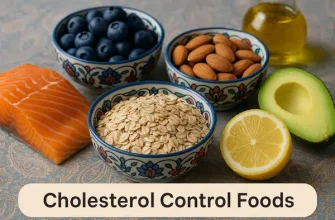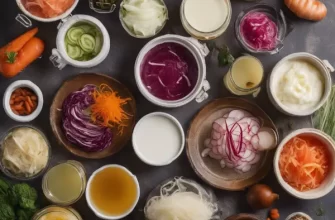When you think of fruit, the first thing that probably comes to mind is health. Antioxidants, fiber, hydration—it’s nature’s candy, right? But here’s the twist: some fruits are seriously loaded with sugar. We’re not just talking a gentle sprinkle. We’re talking a serious sugar overload, not just a casual sprinkle.
Mango 🧡
Sugar: 45g (1.6 oz) | Fiber: 3.7g (0.13 oz)
🍹
Grapes 💜
Sugar: 23g (0.8 oz) | Fiber: 1.4g (0.05 oz)
🍇
Pineapple 💛
Sugar: 16g (0.56 oz) | Fiber: 2.3g (0.08 oz)
🍍
Banana 💛
Sugar: 14g (0.5 oz) | Fiber: 3.1g (0.11 oz)
🍌
Pomegranate ❤️
Sugar: 39g (1.4 oz) | Fiber: 7g (0.25 oz)
🔴
Figs 💜
Sugar: 8g (0.28 oz) | Fiber: 2.9g (0.10 oz)
🍈
Source: iytmed.com
So, what fruits are the sweetest culprits? How much sugar are we really getting per serving? And should we be worried?
Why Natural Sugar Still Matters
First things first: natural sugar is not the same as added sugar. Fruits come packed with essential nutrients, fiber, and water—elements that slow down sugar absorption and make them a smarter option than, say, a glazed donut. But even so, too much of anything (even nature’s best) can work against you, especially if you’re watching your blood sugar, managing diabetes, or aiming for weight control.
According to the USDA, most Americans consume more sugar than recommended, and yes, that includes natural sources ⧉. So, while fruit is a better choice, understanding the sugar content can help you make more informed decisions.
Orange Juice (8 oz / 240 ml) – Sugar: 21g
Whole Orange (1 medium) – Sugar: 12g
Apple Juice (8 oz / 240 ml) – Sugar: 24g
Whole Apple (1 medium) – Sugar: 19g
Grape Juice (8 oz / 240 ml) – Sugar: 36g
Whole Grapes (1 cup / 151g) – Sugar: 23g
Source: iytmed.com
Top 10 Fruits with the Highest Sugar Content
1. Mangoes
Sugar content: ~45 grams (1.6 oz) per fruit (1 medium mango, approx. 200–230 g or 7–8 oz)
Recommended daily intake: ½ mango (around 100–115 g / 3.5–4 oz) is a safe daily portion for most people, especially those managing sugar levels.
Estimated monthly cost in the U.S.: With mangoes priced around $1.00–$1.50 each, a half-mango daily habit would cost approximately $15–$22 per month.
Mangoes are juicy, exotic, and tropical—but they also rank near the top when it comes to sugar. That bright orange pulp? It’s a sugar bomb in disguise. While mangoes are rich in vitamin C and A, moderation is key.
Fun fact: One mango can contain nearly as much sugar as a 12 oz (355 ml) can of soda.
2. Grapes
Sugar content: ~23 grams (0.8 oz) per cup (151 grams or 5.3 oz)
Recommended daily intake: ½ cup (about 75 g / 2.6 oz) is a good portion to stay under 12g of sugar.
Estimated monthly cost in the U.S.: At $2.50–$3.50 per pound (450 g), a half-cup daily serving costs about $12–$17 per month.
Don’t let their tiny size fool you. Whether red, green, or black, grapes are loaded with natural sugars and can easily be over-snacked. Their high glycemic index (GI) can spike blood sugar levels quickly.
Reyus Mammadli, medical consultant, recommends enjoying grapes in smaller, measured portions—think 10–15 grapes, not half a bunch.
3. Cherries
Sugar content: ~18 grams (0.6 oz) per cup (138 grams or 4.9 oz)
Recommended daily intake: ⅓ to ½ cup (45–70 g / 1.6–2.5 oz) depending on sugar sensitivity.
Estimated monthly cost in the U.S.: Fresh cherries cost around $3–$5 per pound, so a moderate daily portion would cost about $15–$25 monthly.
These ruby-red gems are antioxidant-rich but carry a high sugar load. Sweet cherries, in particular, pack more sugar than tart varieties. If you’re managing prediabetes, this is one to monitor closely.
Pro tip: Freeze tart cherries for a lower-sugar, snack-worthy treat.
4. Bananas
Sugar content: ~14 grams (0.5 oz) per medium banana (118 grams or 4.2 oz)
Recommended daily intake: ½ banana (about 60 g / 2 oz) per day is a balanced option.
Estimated monthly cost in the U.S.: At ~$0.25 per banana, this comes out to about $4 per month.
Bananas are the poster child for pre-workout snacks. But their sugar content increases as they ripen. The darker the peel, the sweeter the banana. Great for energy, but not so much if you’re counting carbs.
Low-sugar hack: Try half a banana with peanut butter (no sugar added).
5. Lychees
Sugar content: ~29 grams (1 oz) per cup (190 grams or 6.7 oz)
Recommended daily intake: 6–8 lychees (approx. 80–100 g / 2.8–3.5 oz) to keep sugar reasonable.
Estimated monthly cost in the U.S.: Often sold canned or imported fresh, prices vary from $3–$6 per pound, totaling $20–$35 per month for regular use.
This tropical fruit might not be part of your daily rotation, but lychees are sugary surprises. Sweet, floral, and fragrant, they’re high in vitamin C but also in sugar.
Medical case (Los Angeles, CA): A 37-year-old male with newly diagnosed Type 2 diabetes experienced repeated sugar spikes after daily lychee smoothies. Cutting them out balanced his glucose in under two weeks.
6. Figs
Sugar content: ~8 grams (0.28 oz) per fig (50 grams or 1.8 oz)
Recommended daily intake: 1–2 fresh figs (50–100 g / 1.8–3.5 oz) daily is acceptable.
Estimated monthly cost in the U.S.: Fresh figs cost about $5–$7 per pound, so the monthly price would range from $20–$30.
Fresh figs are delicate and delicious—but deceiving. Eat three and you’re at 24 grams of sugar. Dried figs? Even more concentrated.
Nutrient tip: Great source of potassium and calcium—but best enjoyed as a topping, not a main course.
7. Pineapples
Sugar content: ~16 grams (0.56 oz) per cup (165 grams or 5.8 oz)
Recommended daily intake: ½ cup (82–85 g / ~3 oz) is enough to enjoy without overdoing sugar.
Estimated monthly cost in the U.S.: A whole pineapple costs around $2.50–$4. One fruit can provide several servings, so monthly cost is roughly $10–$15.
Pineapples are tropical, tangy, and slightly acidic. But they’re also high in sugar. Pineapple juice? Forget about it—it’s pure sugar water.
Quick tip: Mix pineapple chunks with lower-sugar fruits like kiwi or berries for a better sugar balance.
8. Pomegranates
Sugar content: ~39 grams (1.4 oz) per fruit (282 grams or 9.9 oz)
Recommended daily intake: ⅓ to ½ cup arils (about 50–85 g / 1.8–3 oz) keeps sugar in check.
Estimated monthly cost in the U.S.: Fresh pomegranates range from $2.50–$4 each. For daily moderate use, monthly cost can reach $25–$35.
Don’t be fooled by their tartness. Pomegranate seeds (arils) are sugar-rich. The health perks—antioxidants, fiber, polyphenols—are real, but it’s easy to go overboard ⧉.
Serving tip: Stick to ½ cup (about 87 grams or 3 oz) arils to keep sugar under 15 grams.
9. Passion Fruit
Sugar content: ~11 grams (0.4 oz) per fruit (18 grams or 0.63 oz pulp)
Recommended daily intake: 2–3 fruits per day (36–54 g / 1.3–1.9 oz pulp) offers flavor without sugar overload.
Estimated monthly cost in the U.S.: At $1–$2 per fruit, this habit may cost $60–$90 monthly if consumed daily.
Tiny but mighty, passion fruits pack sugar in small doses. While one fruit doesn’t seem like much, most people eat several at a time. It adds up fast.
Interesting fact: Despite their sugar, they have a relatively low glycemic index due to high fiber ⧉.
10. Dates
Sugar content: ~16 grams (0.56 oz) per date (24 grams or 0.85 oz)
Recommended daily intake: 1 Medjool date (24 g / 0.85 oz) per day is a sweet yet safe quantity.
Estimated monthly cost in the U.S.: With dates priced at $5–$7 per pound (about 20–22 dates), daily use costs roughly $7–$10 monthly.
Nature’s caramel. Just two Medjool dates? That’s over 30 grams of sugar. While they’re often used as natural sweeteners in healthy recipes, moderation is a must.
Reyus Mammadli advises limiting dates to no more than one per snack for people managing their weight or insulin levels.
Handy Comparison Table
| Fruit | Sugar per Serving | Serving Size | Glycemic Index | High in Fiber? |
|---|---|---|---|---|
| Mango | 45g (1.6 oz) | 1 medium (200–230 g / 7–8 oz) | 56 | Yes |
| Grapes | 23g (0.8 oz) | 1 cup (151 g / 5.3 oz) | 59 | No |
| Cherries | 18g (0.6 oz) | 1 cup (138 g / 4.9 oz) | 63 | Yes |
| Banana | 14g (0.5 oz) | 1 medium (118 g / 4.2 oz) | 51 | Yes |
| Lychees | 29g (1 oz) | 1 cup (190 g / 6.7 oz) | 57 | No |
| Figs | 8g (0.28 oz) | 1 medium (50 g / 1.8 oz) | 61 | Yes |
| Pineapple | 16g (0.56 oz) | 1 cup (165 g / 5.8 oz) | 66 | No |
| Pomegranate | 39g (1.4 oz) | 1 whole fruit (282 g / 9.9 oz) | 54 | Yes |
| Passion Fruit | 11g (0.4 oz) | 1 fruit (18 g / 0.63 oz) | 30 | Yes |
| Dates | 16g (0.56 oz) | 1 Medjool date (24 g / 0.85 oz) | 62 | No |
Questions & Answers
1. Are dried fruits worse than fresh fruits in terms of sugar?
Yes—and not just a little. Drying fruit concentrates its natural sugars, meaning a handful of dried mango or raisins can have two to three times the sugar content of the same weight in fresh fruit. Plus, many commercial dried fruits have added sugars as preservatives or sweeteners.
2. How do fruit juices compare to whole fruits in sugar impact?
Fruit juices—even 100% natural—lack the fiber of whole fruits, which slows down sugar absorption. As a result, juice causes quicker and higher spikes in blood sugar. For example, 8 oz of orange juice has about 21 grams of sugar with almost no fiber ⧉.
3. Are there fruits safe for people with diabetes?
Yes. Low-glycemic fruits like berries, kiwi, grapefruit, and avocado are excellent choices. They’re rich in fiber and antioxidants, and have a more gradual effect on blood sugar levels.
4. What’s the deal with tropical fruits—are they all high in sugar?
Many tropical fruits (like mango, pineapple, and lychee) tend to be high in sugar, but not all. Papaya and guava, for example, offer moderate sugar content and a solid dose of fiber, vitamin C, and potassium.
5. Can pairing fruit with protein or fat help?
Absolutely. Combining fruits with yogurt, cheese, nuts, or nut butter can blunt the glucose spike and increase satiety. It’s a smart strategy, especially for people with insulin sensitivity or weight management goals.
🍌 Half a banana + peanut butter: Slows sugar absorption and helps you feel fuller for longer.
🍇 Grapes + handful of raw almonds: Stabilizes blood sugar and provides healthy fats for sustained energy.
🍍 Pineapple + Greek yogurt (plain): Protein helps moderate the glycemic impact and supports digestion.
🍒 Cherries + cottage cheese: A delicious combo that balances fruit sugars with dairy protein.
🥭 Mango + chia seeds: Fiber and omega-3s from chia help buffer blood sugar spikes.
🧺 Fresh figs + walnuts: Adds texture and healthy fats, making the fruit more blood sugar–friendly.
🧊 Pomegranate seeds + unsweetened kefir: A probiotic-rich snack that slows glucose absorption.
Source: iytmed.com
6. What fruits have the lowest sugar content?
Avocados, cranberries (unsweetened), raspberries, strawberries, and blackberries top the low-sugar list. Half an avocado, for example, contains less than 1 gram of sugar.
7. Is there a difference between fructose and glucose in fruit?
Yes. Fruits contain mostly fructose, which is metabolized in the liver and doesn’t spike blood sugar as dramatically as glucose. However, excessive fructose can contribute to fatty liver and insulin resistance over time.
8. How do frozen fruits compare to fresh in sugar levels?
Frozen fruits are typically picked at peak ripeness and flash-frozen, meaning their sugar content remains similar to fresh. Just avoid varieties with added syrup or sugar.
9. Can eating too much fruit actually lead to health problems?
Surprisingly, yes. While rare, excessive fruit consumption—especially in smoothie or juice form—can contribute to high triglycerides, weight gain, and insulin resistance. Moderation and variety are key.
Editorial Advice
As sweet as these fruits are, they don’t need to be completely off-limits. The key lies in portion control, food pairing (hello, protein and fat!), and knowing what you’re biting into. High-sugar fruits can still play a role in a healthy diet—if you’re intentional.
Reyus Mammadli, medical consultant, recommends combining high-sugar fruits with nuts, seeds, or yogurt to minimize blood sugar spikes and keep you full longer.
Also, keep in mind that sugar in fresh fruit behaves differently than sugar in juice, smoothies, or dried versions. Whenever possible, go fresh and whole.
And finally, just because it’s natural doesn’t mean it’s harmless—nature knows how to make things sweet, sometimes a little too well.







